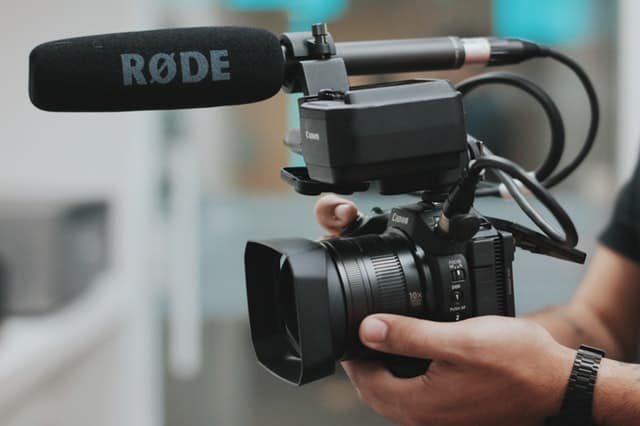Let me ask you a question first: why do you shoot holiday videos? Is it that you want to show off to people through social media about a great holiday you have just had? It may be true enough and no crime at all! Or is it that you like filming scenes and sceneries and with people in it and considering a career in the video editing arena? Very reasonable and a great place to start too. Or maybe you shoot simply because you want to remember – people in your life who matter most.
Every answer is acceptable, because you don’t need a reason for capturing your loved ones live or recording an amazing visit to an exotic location with your family. The problem arises when you want to show it to others – even the loved ones.
Because watching raw footage for 20 minutes can be a daunting task, for even the very near and dear ones and then they have to lie to your face about how much they enjoyed it.
If you want to relieve them from that painful experience or should I say, want to learn a few bare minimum basics about holiday video editing for beginners, please carry on reading.
But before we get serious, let me clear something off.
I believe editing is a digital art form and not for everyone. My elder brother, who is a teacher of economics, can’t even snap a picture without missing a large chunk of the head, is absolutely no match for editing a second’s worth of raw footage. But that never stopped him filming of her two year old daughter whenever he can. So, shoot anything and everything you want without being bothered, because there are professionals who would take care of your holiday video editing.
Now we can get serious.
Hardware:
If you want to edit your raw footage, you need to have a powerful computer to do that. Let me give you just the bare minimum requirements.
Your computer should have at least 8 gigabytes of RAM which is also known as computer’s memory. It also has to have a strong processor to process the complicated tasks you are going to throw at it. Intel Core series (i5 and higher) and the AMD FX series can handle most of them. But processors running with a speed of 2.6 gigahertz (gHz) can get the job done as well. And you must have a lot of storage, at least 500 GB to start with.
Software:

There are bucket loads of software available and many of them have ample free tools which can help you start editing with ease. Since you are starting as a beginner, free tools can help you learn a lot. And you can always buy the paid ones when you think you feel the specific need to do something that can’t be done by free tools. Below are just the names of some widely used editing software in no particular order:
- Window’s Movie Maker
- iMovie
- Final Cut Pro X
- AVID Media Composer
- Lightworks
- Avidemux
- Shotcut
- Hitfilm Express
- Adobe Premier Pro
- DaVinci Resolve
- Openshot
- Videopad
- Blender
- VSDC free Video Editor etc.
Those are just a few widely available, user-friendly editing software. You can jumpstart your holiday video editing with any of them.
The Editing Process Itself:
Capture:
The first step is obviously moving the raw footage to your Mac or PC. You can do it as one big, chunky single file or make it big by adding 5 or 10 smaller files; it usually depends on the OS of your computer or the software you are using for editing. You can bring the video data shot by shot by software and each different shot will be in a different file. It will be immensely helpful when you start editing.
Shot:
After bringing all the footage, you have to decide about how you are going to use it. Let me make it clear by giving an example the last video I edited –
It was my parents’ fiftieth wedding anniversary and a huge party was thrown. The video started from the moment of the guests started arriving.
A 2-second shot of the car door being opened.
A 3-second shot of the smiling guests getting out of the car.
A 3-second shot my parents were greeting them at the doorways.
A 3-second shot of the guests hugging each others.
And vice versa.
I had to figure out a way to find the starting and finishing of each little incident as a complete unit and bind them later sequentially by also maintaining chronological order.
I had to do that by watching the raw footage many times and pointing an IN and OUT marker for the little units that I was going to use later.
Timeline:
When you finish working out the shots, they need to be organized so that you can knit them together. And timeline is the place where you do that. You place the little clips in sequence and watch them being played.
Add Effects:
Now the fun part begins. After you have done assembling and cleaning-up timeline, you can add effects. You can put together texts, transitions, still pictures, filters – anything. It entirely depends on your likings. I can just give a word of experience –less is always good in the case for adding effects.
There you go, with the above four easy concepts – capture, shots, timeline and adding effects – you can finish editing your holiday video. You might not create a masterpiece but at least people won’t have to lie to your face.
Before I leave you on your own, just a few pointers to remember –
- View your raw footage a number of times to be sure to choose the right clips to use later.
- Make sure you organize everything in separate folders. If you can figure out the best takes before the editing process, the job will be a whole lot easier.
- Shoot each scene a number of times. It will give you a sea of wealth to work later on and you can mix and match every clip for a refined result.
- Stop working for hours end, it will dull your senses and you may miss easy fixes.
- Best bet is always using instrumental instead of music, because lyrics can distract if you want to add your subjects talking.
- If you’re using music, select instrumental as a backing track. Lyrics can often be distracting unless used delicately.
- Get clear idea about some basic terminology like Jump Cuts, J Cut, L Cut, Montage, Cutting on Action, Match Cut/Match Action, Cutways, Wipe etc. You can get explanations about them in plain non-technical terms in numerous sites.
- This is paramount – you need to learn to be patient. There are endless sources of self-learning out there and some of them can be contradictory. But if you know how to be persistent, you can find your own way of editing.
You would be the judge of my little endeavor to give you some very basic ideas about holiday video editing. Now use them, and be an awesome editor.
